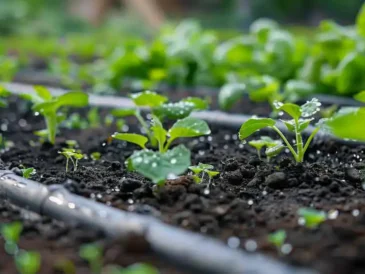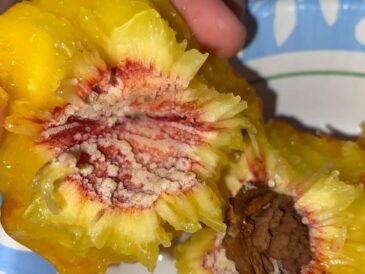The roots are mucilaginous and have long been used in folk medicine for coughs, sore throats, digestive issues, and skin irritations – similar to marshmallow root.
How to Use:
- Decoction (root tea): Chop fresh or dried roots, simmer in water for 15–20 minutes, and drink for respiratory or stomach relief.
- Poultices: Mash the root and apply to skin rashes, burns, or bites for soothing effect.
- Syrup: Infuse with honey to create a natural throat-soothing syrup.
Use roots from plants older than 2 years for medicinal strength.
How to Grow Hollyhocks Successfully in Your Yard
Hollyhocks thrive in most temperate climates and are relatively forgiving once established.
Best Growing Conditions:
| Requirement | Ideal Conditions |
|---|---|
| Sunlight | Full sun (6–8 hours daily) |
| Soil | Loamy, well-draining, enriched with compost |
| Water | Moderate, consistent moisture |
| Spacing | 18–24 inches apart |
| Hardiness Zones | USDA Zones 3–9 |
How to Start from Seed:
- Sow in spring or fall, directly in the ground or in seed trays.
- Lightly press seeds into soil but don’t cover heavily—they need light to germinate.
- Keep soil moist until germination (usually 1–2 weeks).
- Transplant when seedlings have 2–3 sets of true leaves.
Supporting Tall Growth:
Because hollyhocks can reach 6–8 feet tall, stake them or plant them near a wall or fence for support, especially in windy areas.
Dealing with Common Pests:
The most common hollyhock problem is rust fungus, a reddish-orange leaf spot caused by moisture.
Prevention Tips:
- Space plants for good air circulation
- Avoid overhead watering
- Remove and destroy infected leaves early
- Apply organic sulfur or neem oil as a natural antifungal
Traditional Herbal Uses of Hollyhock
In herbal medicine, hollyhocks have been used similarly to marshmallow root (Althaea officinalis). Key uses include:
Respiratory Health:
Tea from flowers and roots helps ease dry coughs and throat irritation.
Digestive Soothing:
The mucilage in leaves and roots coats the stomach lining, calming indigestion or heartburn.
Skin Care:
Poultices made from crushed leaves or roots help heal burns, rashes, and swelling.
Wound Healing:
Leaves and flowers can be steeped in oil for 2–3 weeks to make a healing salve for minor wounds.
Note: Always consult a healthcare professional before using hollyhock therapeutically, especially if pregnant or taking medications.
Fun Recipes Using Hollyhocks
1. Hollyhock Flower Tea
- 1 tbsp dried or 3 tbsp fresh petals
- 1 cup boiling water
- Steep for 10 minutes, strain, sweeten with honey
2. Hollyhock Leaf Dolmas
- Blanch young leaves
- Fill with rice, herbs, and vegetables
- Roll and bake with lemon-olive oil sauce
3. Hollyhock Syrup (for Sore Throats)
- Simmer chopped roots in water for 30 mins
- Add raw honey and simmer until thick
- Cool and store in a glass jar
Safety Notes and Precautions
- Pesticide Warning: Only consume hollyhocks grown organically or from untreated seed.
- Allergy Alert: Though rare, mucilaginous plants can cause digestive upset in sensitive individuals.
- Pregnancy: Consult a professional before consuming hollyhock root tea while pregnant.
Hollyhocks are more than just decorative. They’re part of a rich heritage of edible, medicinal, and ecological gardening, offering powerful benefits while bringing vertical beauty to your yard.




